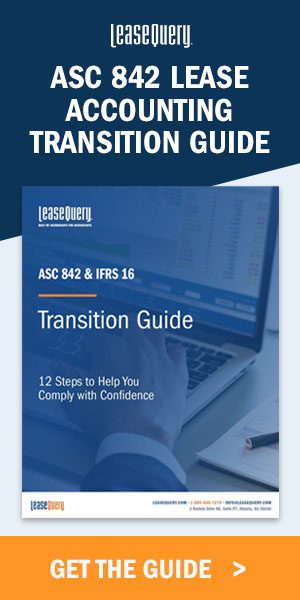This article, "A Sea Change Is Coming – Transitioning to FASB’s New Lease Accounting Standard," originally appeared on Protiviti.com.
On the heels of the Financial Accounting Standards Board’s (FASB) new revenue recognition standard, which becomes effective for calendar-year public companies beginning January 1, 2018, the accounting and internal audit world is gearing up for another significant accounting and financial reporting change beginning one year later (on the first day of the first quarter), January 1, 2019 – the new lease accounting rules.
We presented on this topic last month at The IIA’s 2017 Gaming & Hospitality Conference in Las Vegas. Judging by the attendance at our discussion panel, many gaming and hospitality organizations are acutely concerned about making the transition to the new rule and are turning to their internal audit departments for strategic advice.
In scope for that industry are leases of real estate, hotels and casinos, and of course, the ever-changing casino floor electronic gaming equipment itself – if leased. However, for all industries, the new lease accounting standard represents a sea change in lease accounting for lessees, affecting all companies and organizations – whether public, private or not-for-profit – that lease assets such as real estate; airplanes; ships; and construction, office or manufacturing equipment. For lessors, accounting for leases is substantially the same as in the past.
The new standard will require lessees to recognize a lease liability and a right-of-use asset for all leases, except for short-term leases, as follows:
- “Lease liability” is the lessee’s obligation to make lease payments arising from a lease, measured on a discounted basis.
- A “right-of-use asset” is an asset that represents the lessee’s right to use, or control the use of, a specified asset during the lease term.
With regard to income statement recognition for lessees, the FASB retained a dual model, requiring leases to be classified as either operating or finance. Operating leases will result in straight-line expense recognition, while finance leases will result in a front-loaded expense pattern. Classification will be based on “consumption” of the asset, meaning that leases of property (i.e., real estate), which are typically not consumed, will follow straight-line amortization, and leases of non-property (e.g., office equipment), which are typically consumed, will follow an expense pattern similar to current capital leases.
Of note, the International Accounting Standard Board (IASB) retained only a single model – all leases treated as a financing.
While the new standard represents a big change, the bright side is that many companies might be able to comply using their existing processes and systems, provided their current lease inventory is appropriately inventoried, housed and cataloged.
That said, during our panel we stressed that lessees should nonetheless ensure that their policies, personnel, processes and reporting systems will be effective in generating the data and information needed to account for their leases in accordance with the new standard. A few key points we addressed at the conference:
- Determine the reliability of your lease inventory: Lessees should determine that all leases across the organization are identified on a timely basis and aggregated to create a complete and accurate lease inventory. Lessees should be able to update that inventory dynamically.
- Assess systems and data scalability: If leases are managed through spreadsheets and databases at many locations across the organization, companies should consider selecting and implementing a suitable technology solution to simplify the lease data gathering process, store and update the required data, generate the required accounting, and support the required disclosures.
- Watch out for embedded leases: If companies enter into arrangements that grant the right to use property, plant or equipment, that arrangement may very well contain a lease. Common situations are assets embedded in service arrangements or included in a bundle of goods or services. Don’t forget to account for those in your lease inventory!
- Revisit your financing obligations: Lessees should review current debt agreements now to ensure the initial recording of new lease liabilities upon standard adoption would not be considered “new debt,” thus triggering unwanted debt covenant violations in areas such as debt/equity and debt coverage ratios, as well as working capital amounts and ratios, whether subject to covenants or not. Have that conversation with your bank now!
- Understand what is new in the business: All organizations should assess whether technological or other changes are expected to take place in the business that will affect the nature of the lease instruments deployed to obtain access to needed assets to operate casinos, hotels or electronic gaming equipment.
- Understand the new disclosures: Finance and internal audit executives will want to understand the financial reporting and expanded disclosures under the new standard and how they may require modification to existing systems and processes. The disclosures required of lessees and lessors include, among other things, the nature of the leased assets, management’s significant assumptions and estimates over lease amortization period and method, and a debt maturities summary.
In closing, the FASB’s new leasing standard is finally a reality. Financial management and internal audit teams need to familiarize themselves with the new standard and become educated as to its impact on the reporting of financial position, statement of earnings and cash flow, and all required disclosures.
Getting the transition process started early will enable management to develop an efficient and timely plan, as well as involve internal auditors early and enable them to have a voice at the table and offer strategic guidance to ensure orderly controls transition and project management monitoring. An early start will provide sufficient lead time to enhance processes, upgrade support systems and prepare stakeholders for the coming change.



